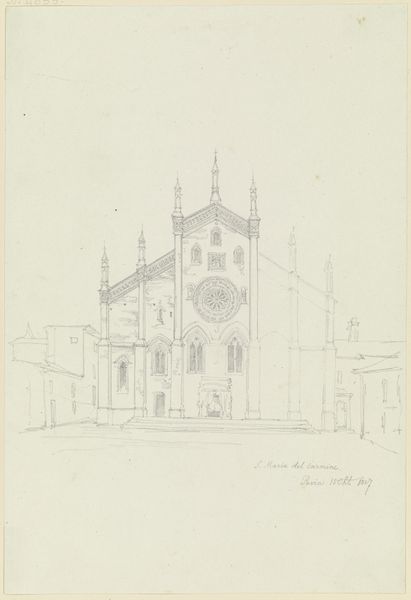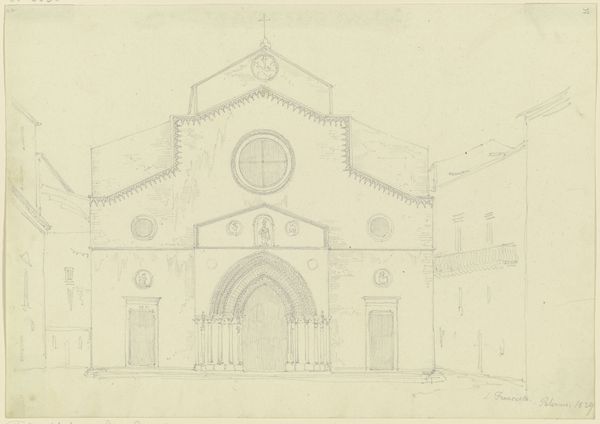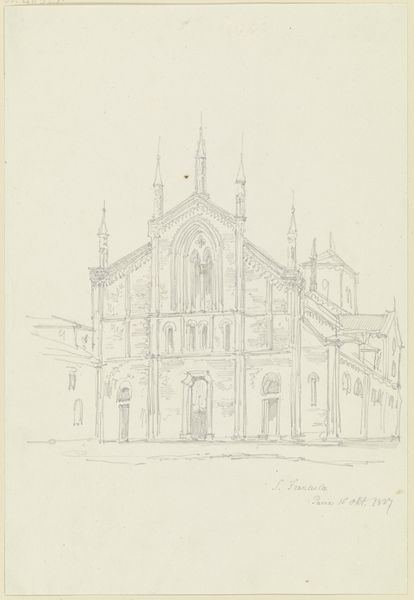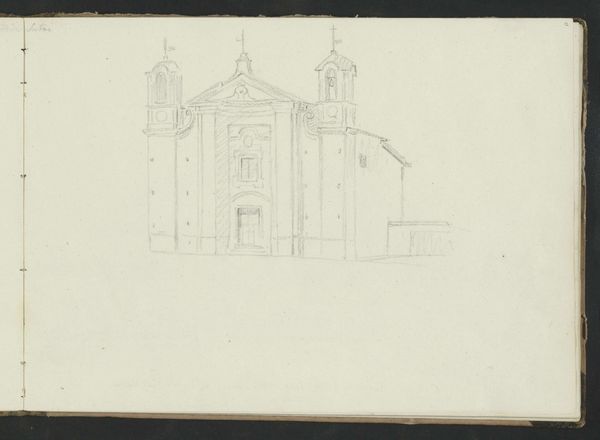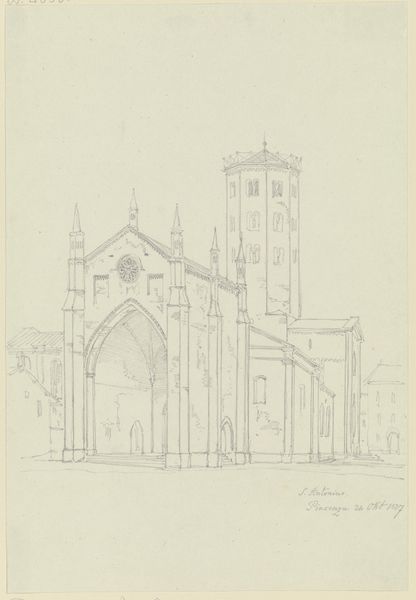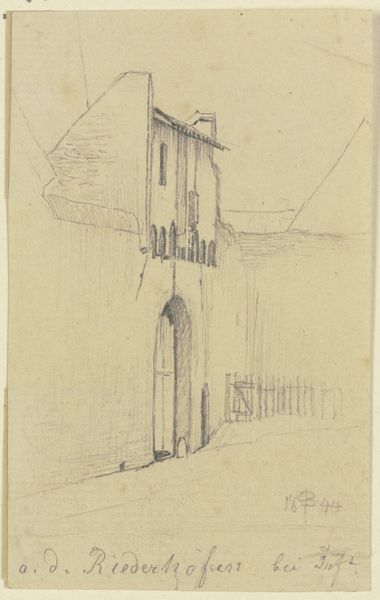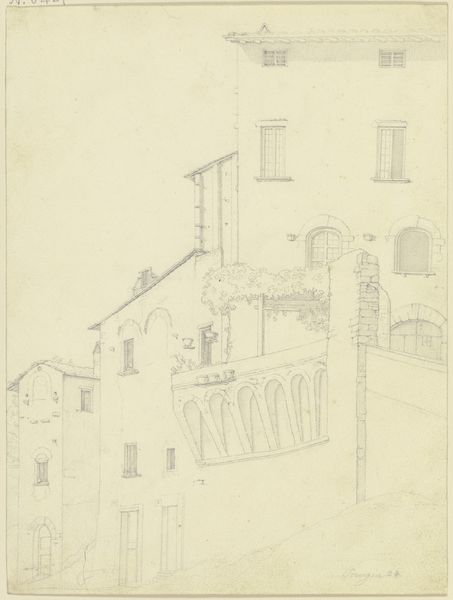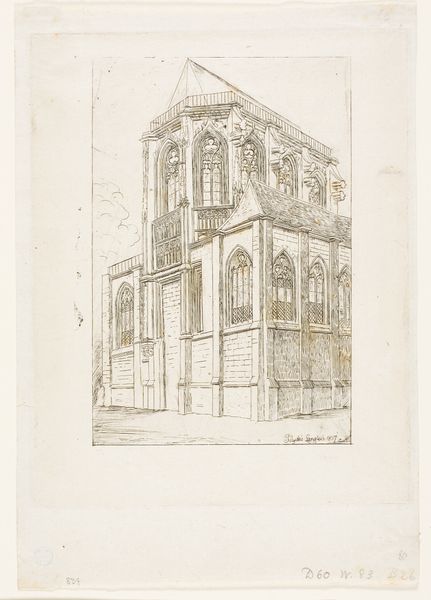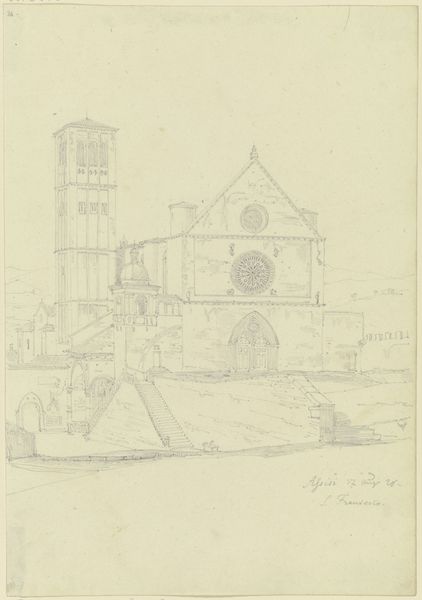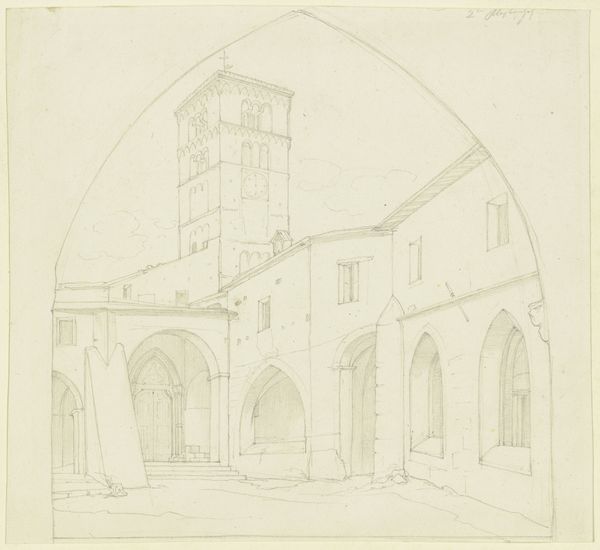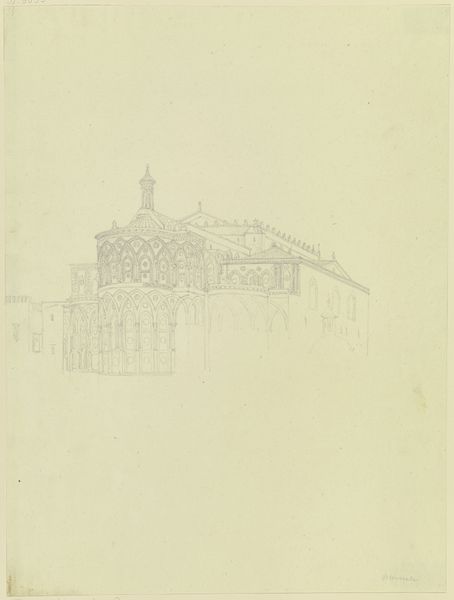
S. Maria della Scala in Messina, beim Erdbeben von 1908 zerstört 4 - 1829
0:00
0:00
Copyright: Public Domain
Curator: This delicate pencil drawing by Friedrich Maximilian Hessemer captures the S. Maria della Scala in Messina. It's titled "S. Maria della Scala in Messina, beim Erdbeben von 1908 zerstört" which translates to "...destroyed by the earthquake of 1908", and dates back to 1829. What's your initial reaction to it? Editor: My first thought is fragility, really. The paper seems thin, the lines are faint. It evokes a sense of impermanence, amplified by the title. Curator: Absolutely. You see how Hessemer meticulously renders every detail. The materiality of the architecture contrasts with the almost spectral rendering, particularly when considering its eventual demise due to the earthquake. The physical reality and the ephemeral drawing really clash! Editor: It makes you consider the labor, doesn't it? He meticulously recreated stone and mortar using only graphite, likely under commission by wealthy patrons for documentation, a common practice at that time. It highlights the art market's influence even then. Curator: And those delicate lines! It's a melancholic kind of beauty, isn't it? It speaks to the allure of neoclassical architecture, the artist's reverence almost painful now, knowing what’s to come, I can't help feeling an echo of a place destined for catastrophic loss. Editor: Exactly! Consider how this kind of drawing also acted as a prototype and model. Like how drawings such as this often guided laboring architects and masons. But of course, an earthquake throws all such class distinctions and separations apart: structure and its support both destroyed simultaneously! Curator: What resonates, I think, is the silent anticipation contained in the lines. Hessemer perhaps didn't anticipate disaster, but he caught an architectural space that makes you stop, feel, think about those kinds of ideas and even imagine a narrative and think how all those neoclassical lines can hold stories of love and disaster all together... Editor: A testament to process itself—from material procurement to pencil application—to capture fleeting time and tragic inevitability of what is lost. Perhaps the destruction is what has really helped cement this building in our shared histories and thoughts!
Comments
No comments
Be the first to comment and join the conversation on the ultimate creative platform.
